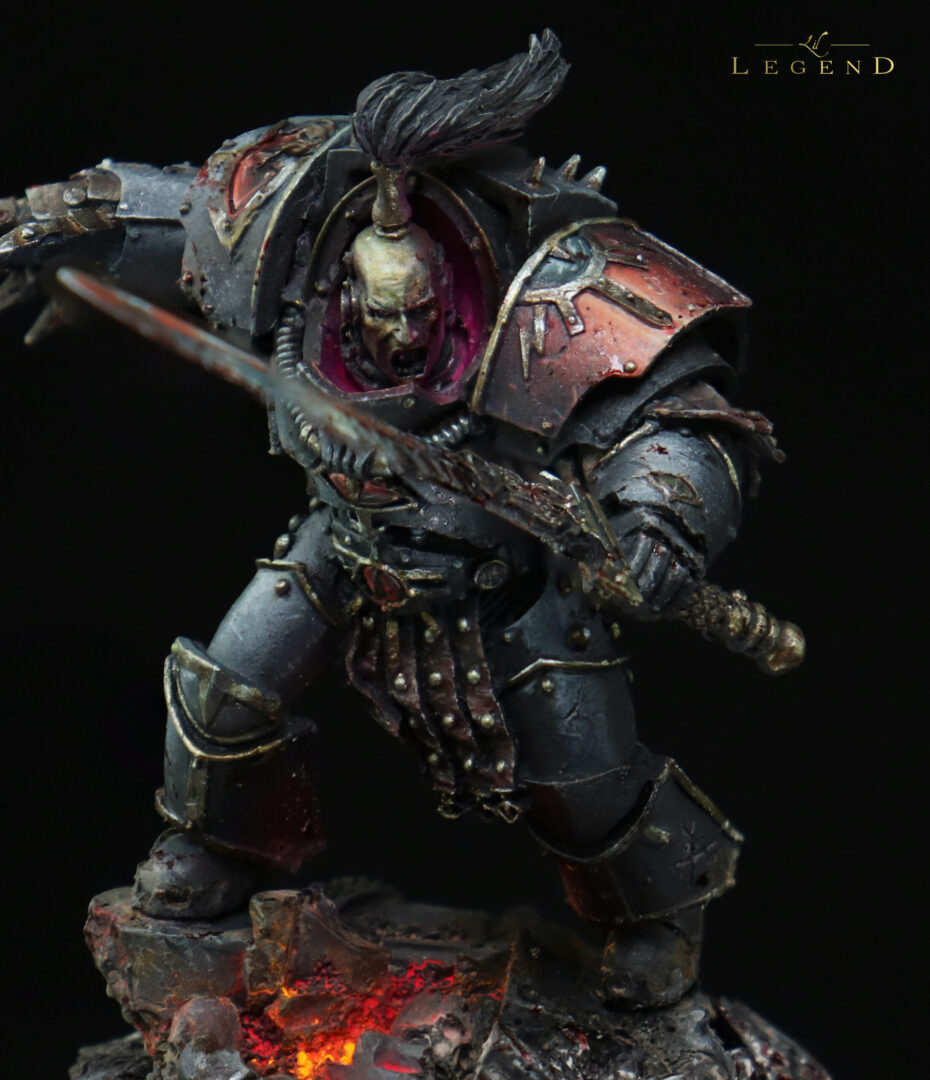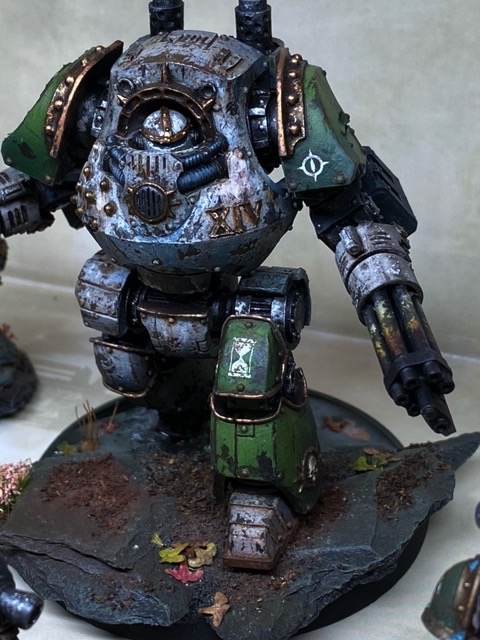
For these sorts of live streams, I like to write up a few show notes. Markers to keep the discussion on topic and remind myself of flashing moments of insight gleaned while in the shower or walking the dog. I thought you’d like to see them, so here they are – the heresy aesthetic!
Run down of show topics: Introduction. Who are you? How are you doing? What have you been up to hobby-wise recently? Main topic discussion. Heresy Aesthetic – what is it? Outro and adverts.


PICTURE OF EAVY METAL IN COMPARISON TO HERESY MARINE
This show is not a criticism of Eavier metal painting. The studio develops top quality work that fits its USP. Work is clean, bright and appealing to new enthusiasts.
Easy metal is great – it produces easy to read, fantastic pieces of art suitable for advertisement. This is a different style altogether that may interest viewers out there.
What is the difference between Eavy Metal and Heresy modelling? Heresy takes its inspiration from military scale modellers.

The tone of Horus rising was very different to other Warhammer literature at the time. It’s written in a more gritty, realistic style. It takes its time to work through the fight scene, using mundane military tactics and warfare we’d recognise today.
This fed into the early heresy style. No edge highlighting, zenithal highlighting and battle damage.
Phil Stutcinskas was an award-winning military scale modeller and ported many techniques from that world over into ours.
The airbrush, weathering powders, oils, the use of overlapping varnishes for pin washing and decal application. All of these were staples of the military world, but this was a new world for us.
Hyper realism – seeing the dirt beneath the fingernails.

The community has been disparagingly called rivet counters in the past. There’s a bias toward historical fidelity – ensuring armour marks are suitable to the time period, and maybe a tad litigious adherence to the historical side of a fantasy universe riddled with contradictions. This can be off-putting to new members. But if you are reading this outside of the bubble, take it as a positive! The Heresy community are generally quite communicative and will chew over these era-appropriate models you want to include in your army. Use this as a jumping off point from your creativity, not a dead end.
Creating a Heresy army is different from looking at the unit entries and picking the best ones to synergise on the battlefield. The unit entires instead exist to serve the story you are trying to tell with the force. It demands more leg work from you as a collector, and the community is out there to help shape your narrative.
Painting-wise, I like to say that Heresy modeling is seeing the dirt beneath your fingernails. Detailing armour, adding chips, oil stains, weathering marks, all of these reflect the context in which you are setting the army in.

We can see wide use of the sponge chipping technique, where foam is taken from packing materials and dipping into a paint, dabbed off, then applied onto the miniature. This creates a haphazard spread of chipped marks that look like incidental battle damage.
Oils streaks

Oils and oil streaks – is there a better combination? The use of oils in general to add a different dimension to your work was certainly novel and feels that way today too. Pin washing, oil streaks, oil modulation, these are all hallmarks of Heresy modelling – and it’s so easy to use!
Unlike acrylics that dry within a few minutes, oils take a few hours, even days to dry. If you mess something up, simply wipe down the surface with a brush and some oil spirits.
Weathering powder

How many have used this and just caked the lower half of our miniature? I have. It’s designed for models that aren’t played with. You create a tank, add pigments, then mount it for display. It’s been a steep learning curve discovering which pigments and binders work to endure the demands of gaming.
Weathering powder helps sell the realism of the world. If you are a marine that’s been fighting for days, some mud or dust will splatter against the armour. the application of it helps embed the context of the universe.

Above all else, Heresy modelling seeks to remove the barrier between the viewer and the universe. When I paint a miniature, I want to feel like the viewer is entering that world, that they aren’t seeing a miniature, but rather they are stepping into the universe and seeing this character without a filter.
The Airbrush
The what????????????
How bizarre was seeing this used for the first time? Painting armies just because a breeze with this thing. Large flat surfaces like tanks, marines, hell anything just because a lot more accessible to paint.
It also opened up techniques like realistic chipping, surface modulation and pre-coating. A steep learning curve and you will spend half your painting life cleaning it, but it’s indispensable.
Above all else, this aesthetics shouldn’t just be thought of as belonging to heresy alone. We’re seeing a glut of artists take these techniques and apply them to the world of AOS and 40K. So why not take the plunge and buy a few oils?
ADVERT – super-liminal suggestion.
If you would like to learn more about these techniques and how to apply them to your own miniatures check out Lillegend Patreon! It’s a library dedicated to developing miniatures painters in whichever field takes their fancy. Want to crack out armies? We have courses on speed painting. Want to learn to weather miniatures? There’s a full masterclass with PDF support available right now.


